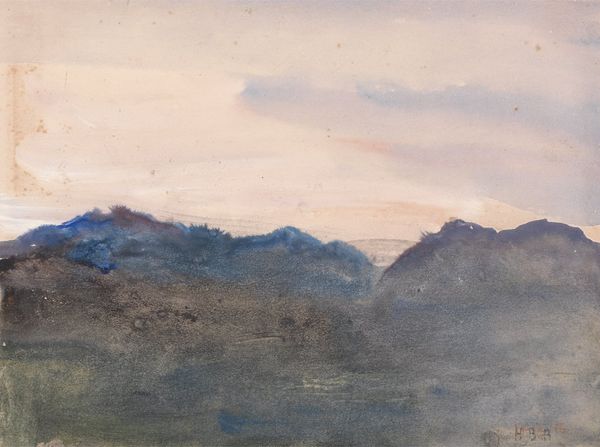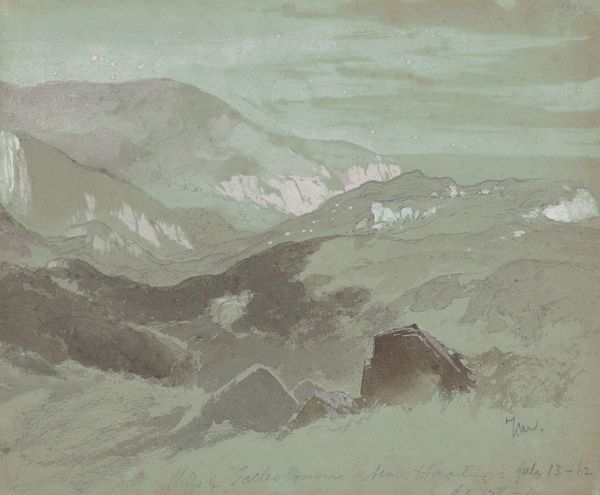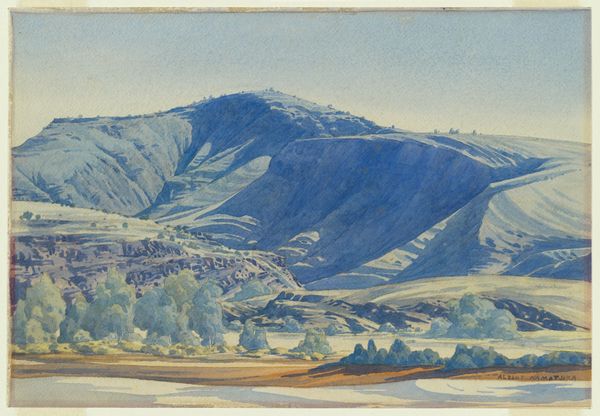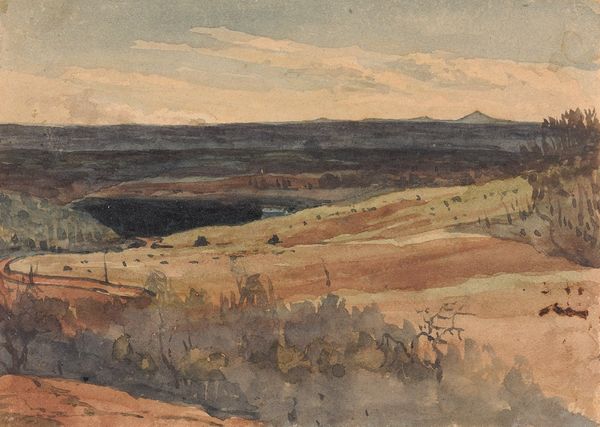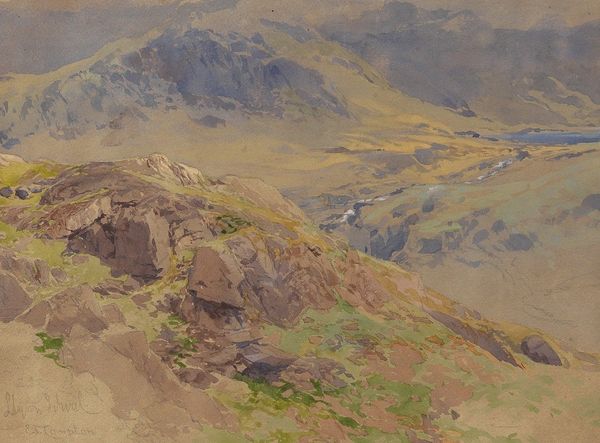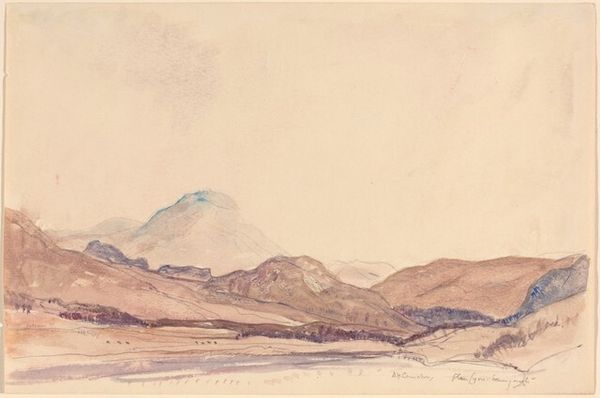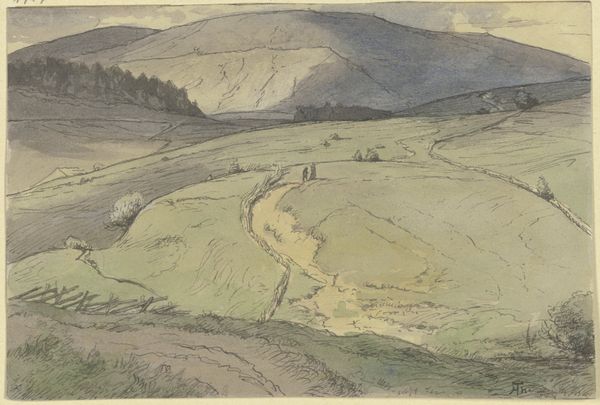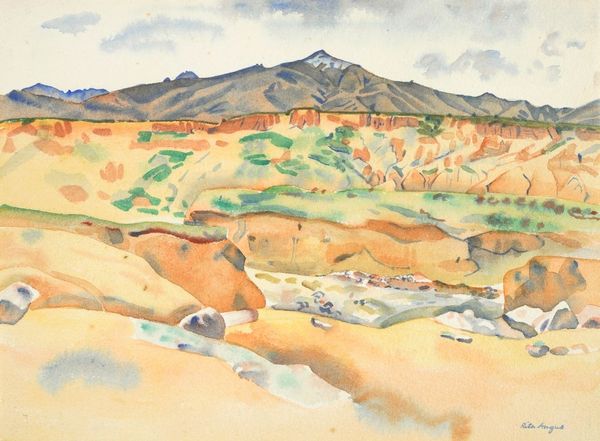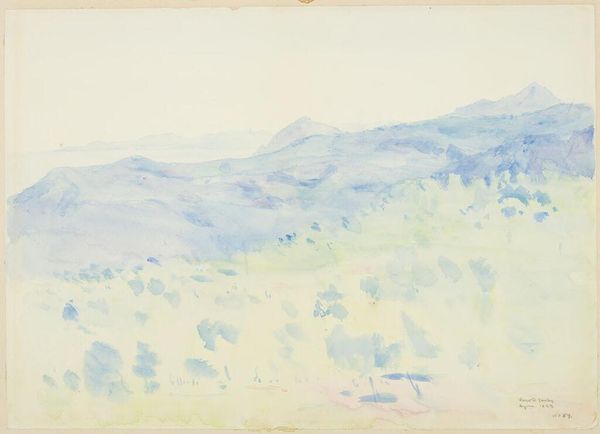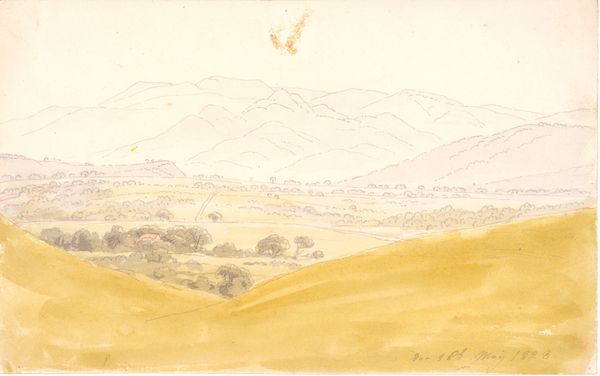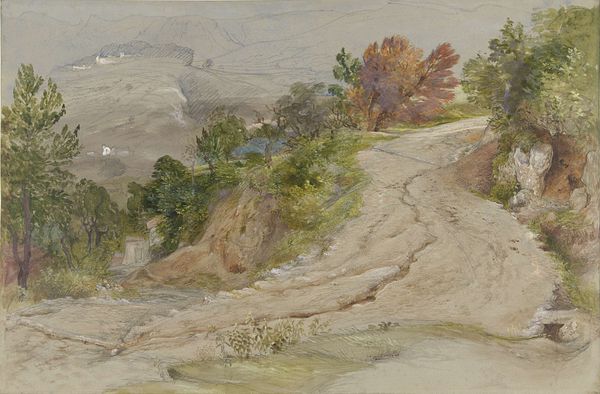
#
abstract painting
#
impressionist landscape
#
possibly oil pastel
#
oil painting
#
acrylic on canvas
#
naturalistic tone
#
seascape
#
painting painterly
#
watercolour illustration
#
watercolor
Dimensions: 30.5 x 67 cm
Copyright: Public domain
Curator: What a serene and picturesque scene. We’re looking at a painting titled "Olevano Romano from the Arcinazzo Uplands" by Enrico Nardi. It captures the landscape of the Roman countryside. Editor: My immediate impression is one of incredible dryness and light. It almost feels like you could crumble the land in your hands. What medium do you think Nardi employed here? The colors feel very soft, not oily. Curator: Given the subtle gradations, it may be watercolor, although the effect does border on pastel. Either way, there's something wonderfully romantic in the composition, reminiscent of the Grand Tour painters. It fits within the long tradition of landscape painting where artists were interested in finding historical resonance within this landscape. Editor: Absolutely, the tones are doing all the heavy lifting! The materiality lends itself so well to rendering this sense of place. How did artists find and prepare their pigments for landscapes at that time, and were there ways the landscape was marketed through painting? Curator: That's a fascinating point, how painting both represents and constructs our idea of a "desirable" landscape. Paintings of the Italian countryside certainly contributed to its romantic allure, which further boosted tourism and the art market, to make Italian artworks all the more alluring to potential buyers. This work feels self-conscious of that trend. Editor: Right, the economic conditions definitely fuel such imagery. I’m drawn to how this work prompts reflection on labor within landscapes, the cultivation and construction implied but only rendered in soft brushstrokes here. The artist leaves room for the viewer. Curator: Indeed. And seeing this image within our modern world helps emphasize how cultural visions affect not only land use but conservation efforts too, which can go against other interests. What kind of relationship between art and public can be built here? Editor: Perhaps something about understanding materiality not just in itself, but what the cost has been, not just environmental, to achieve it. Thanks, Curator, for adding a new dimension to my thoughts! Curator: And thank you, Editor. This conversation allowed me to see anew the painting’s rich tapestry of art historical trends.
Comments
No comments
Be the first to comment and join the conversation on the ultimate creative platform.

